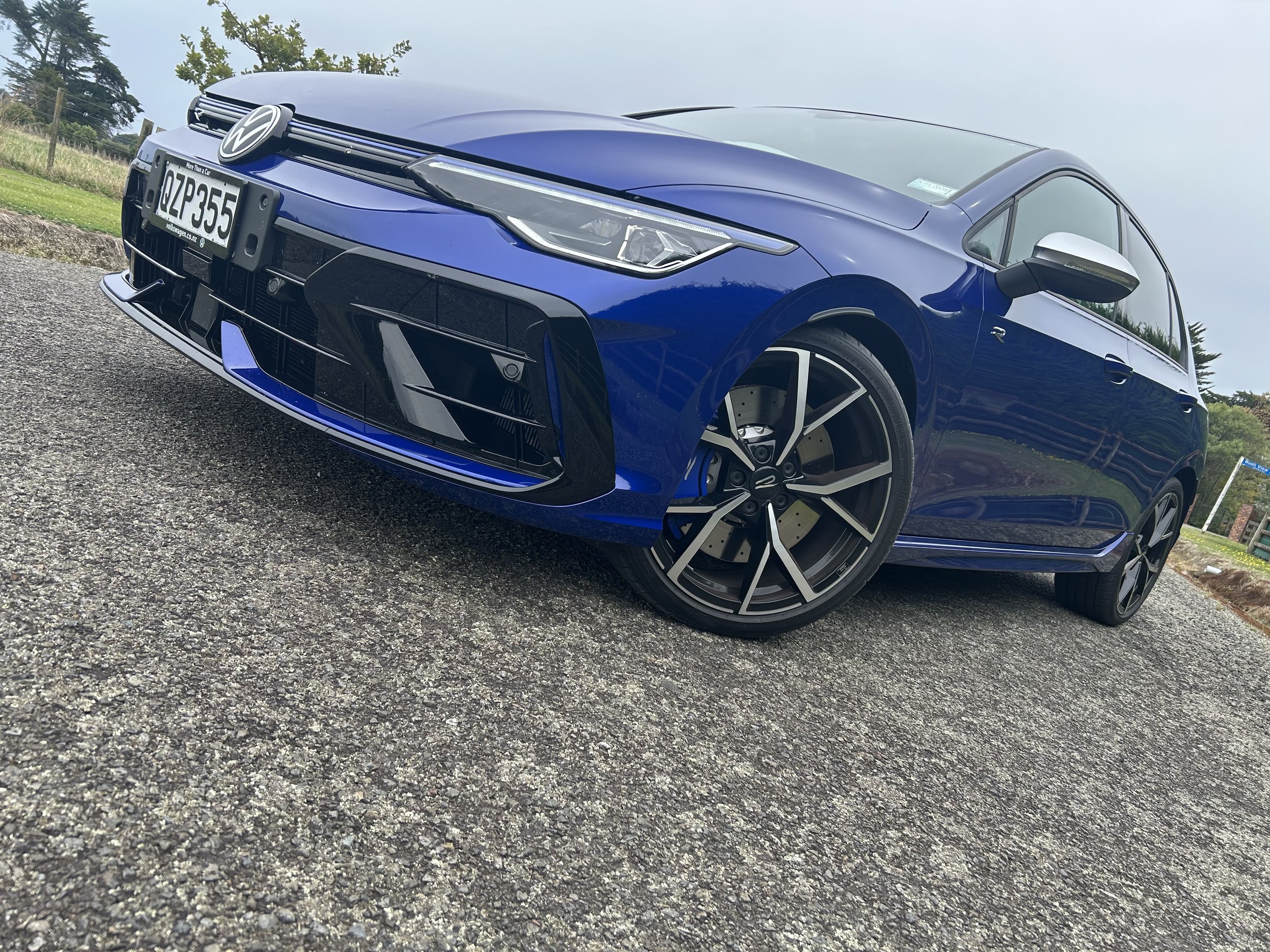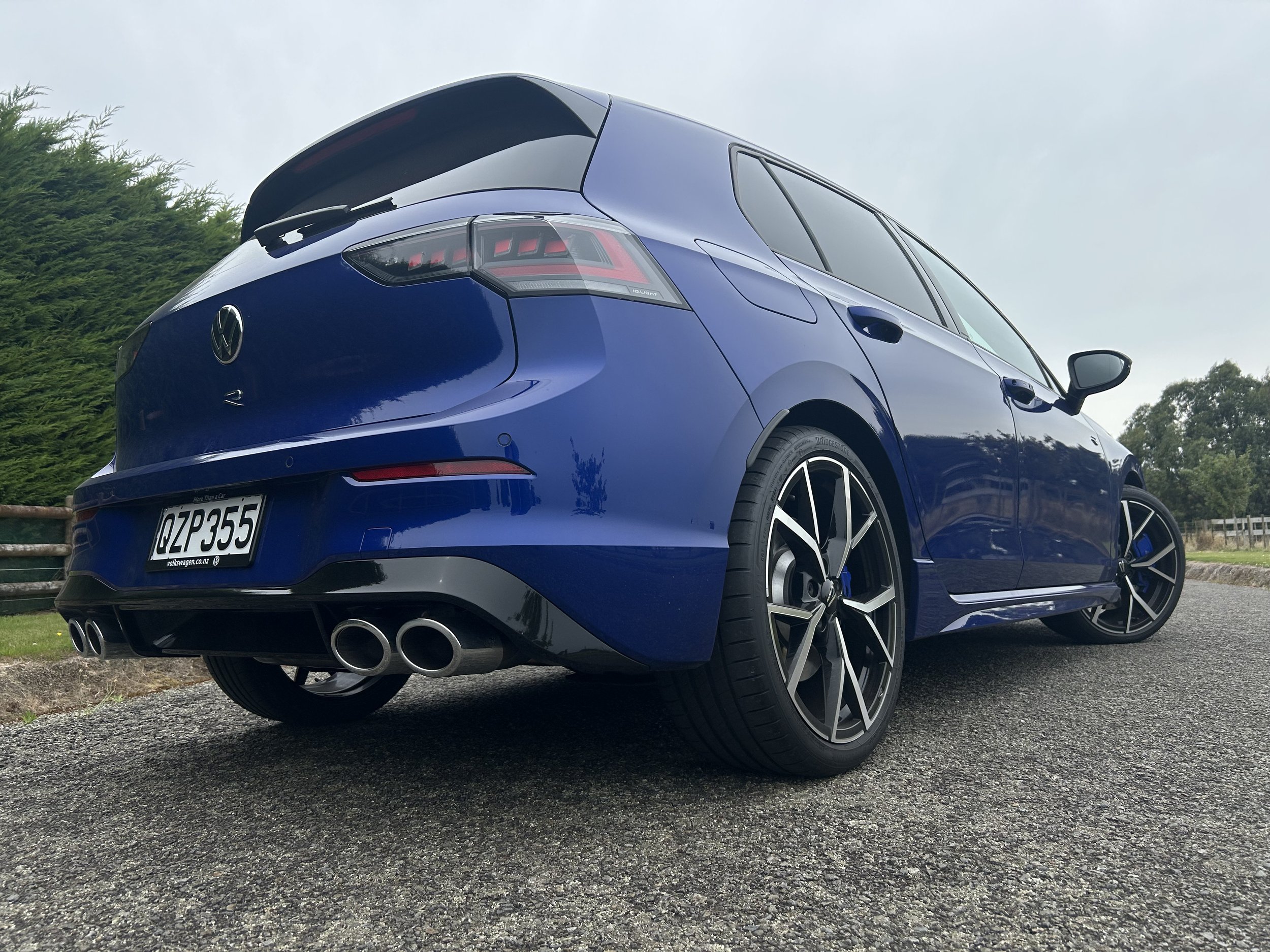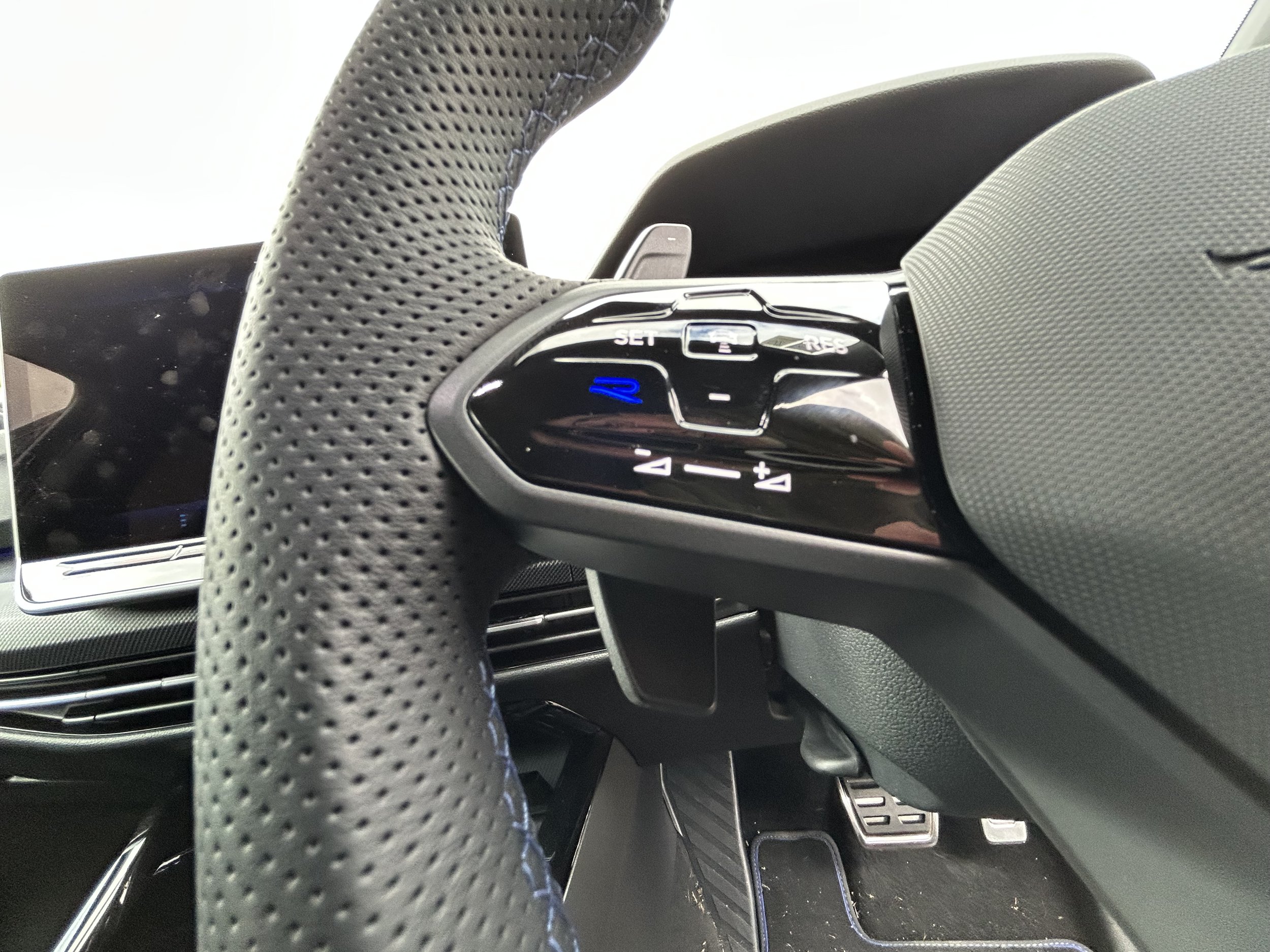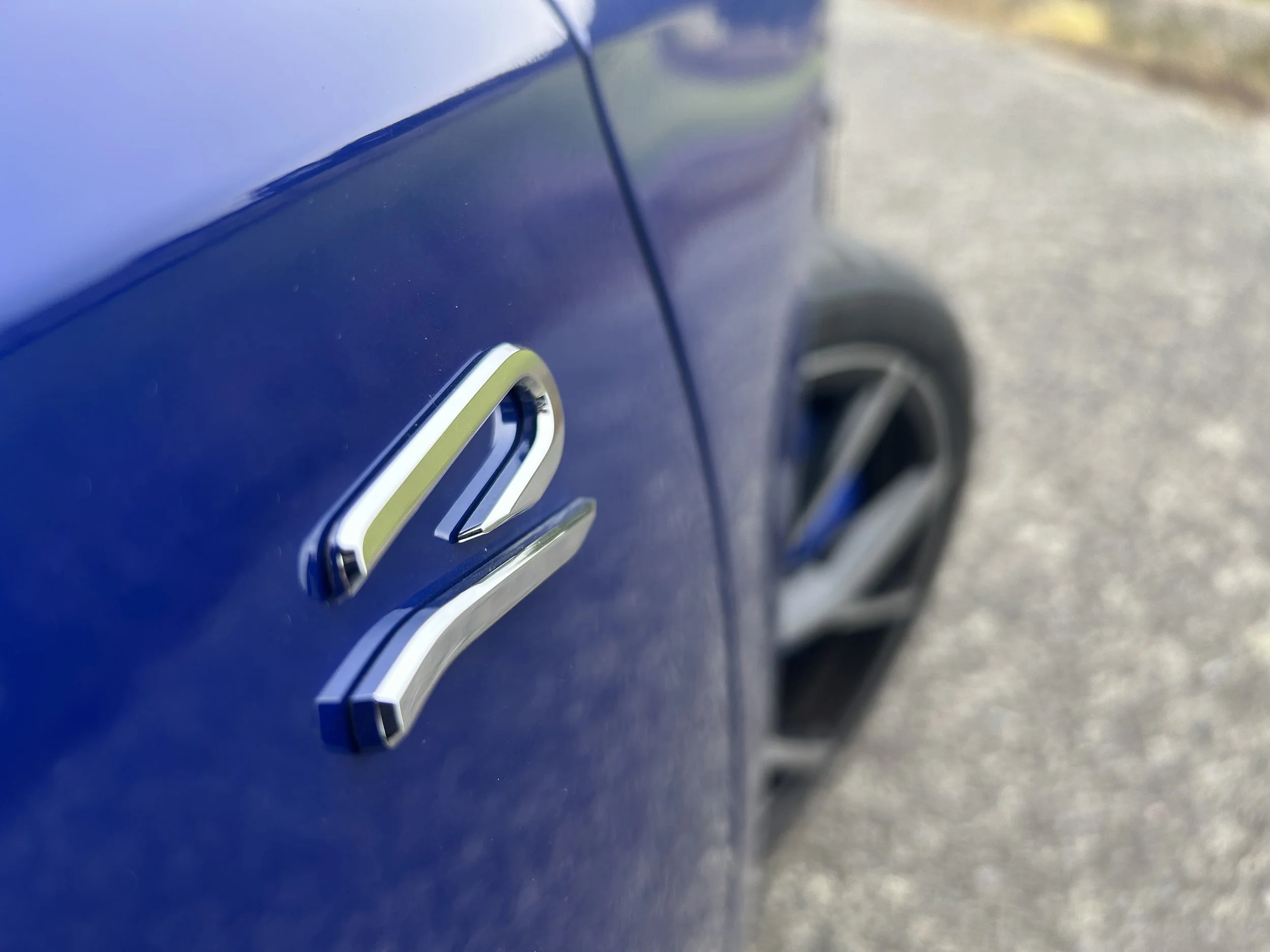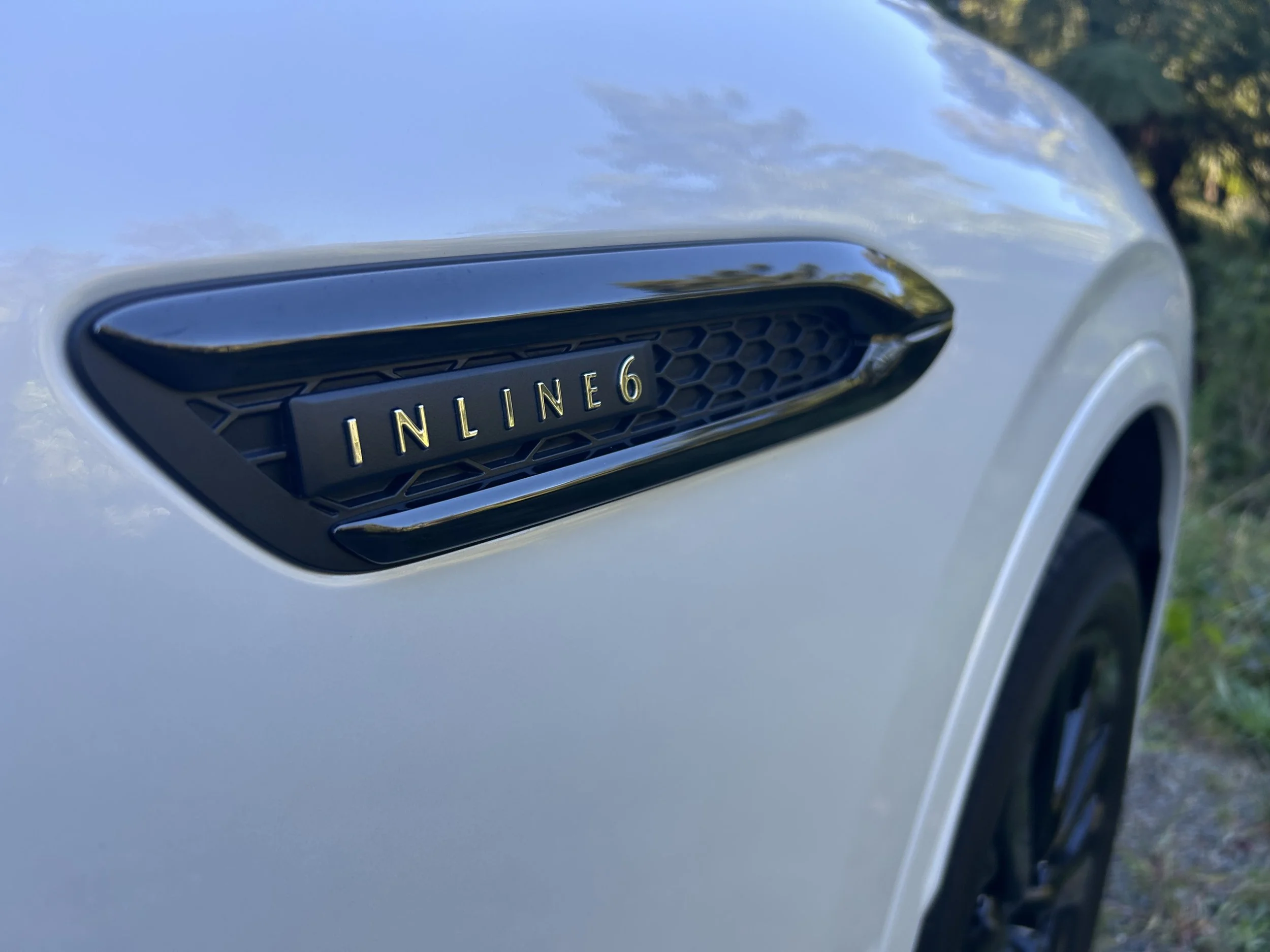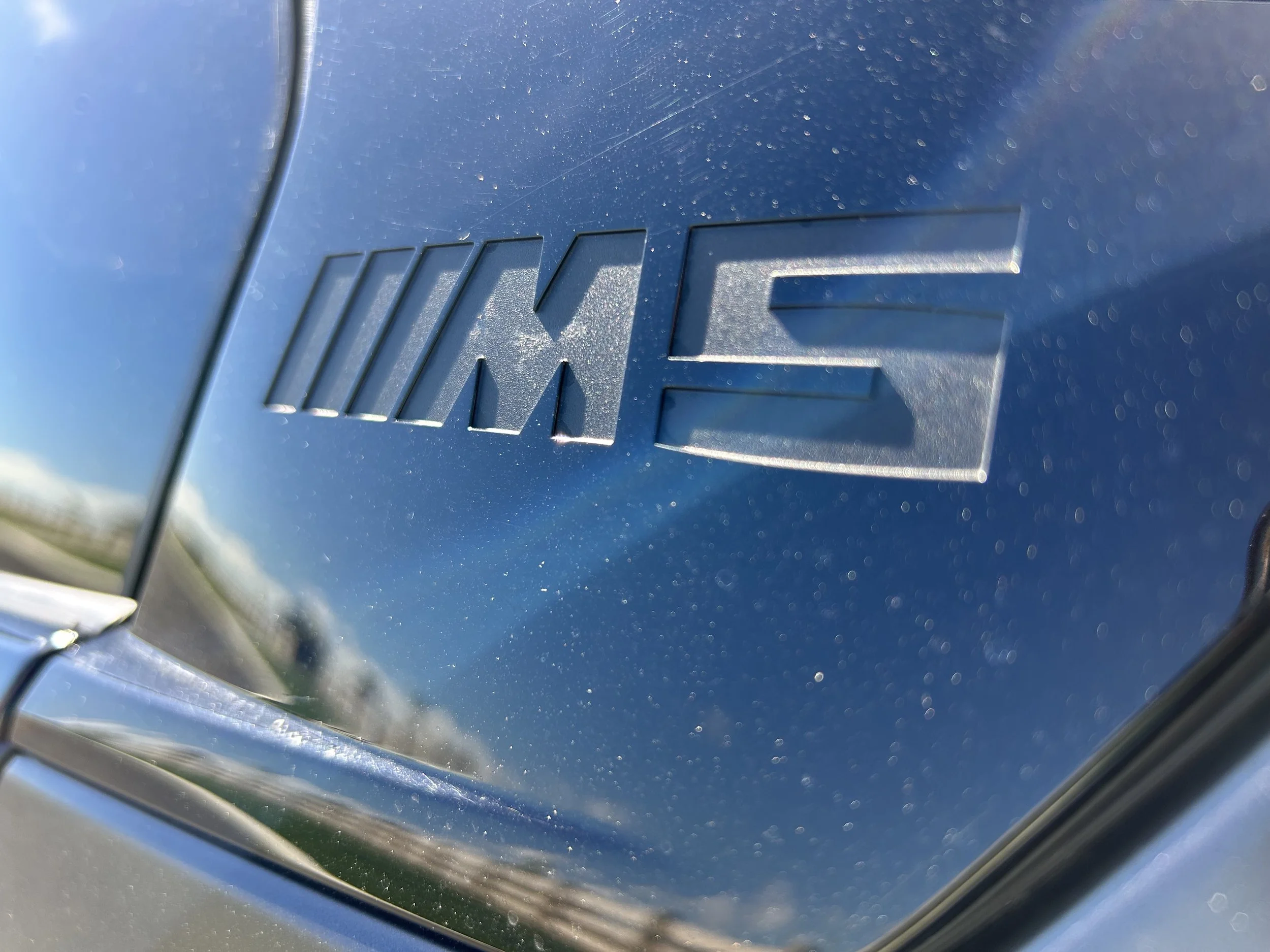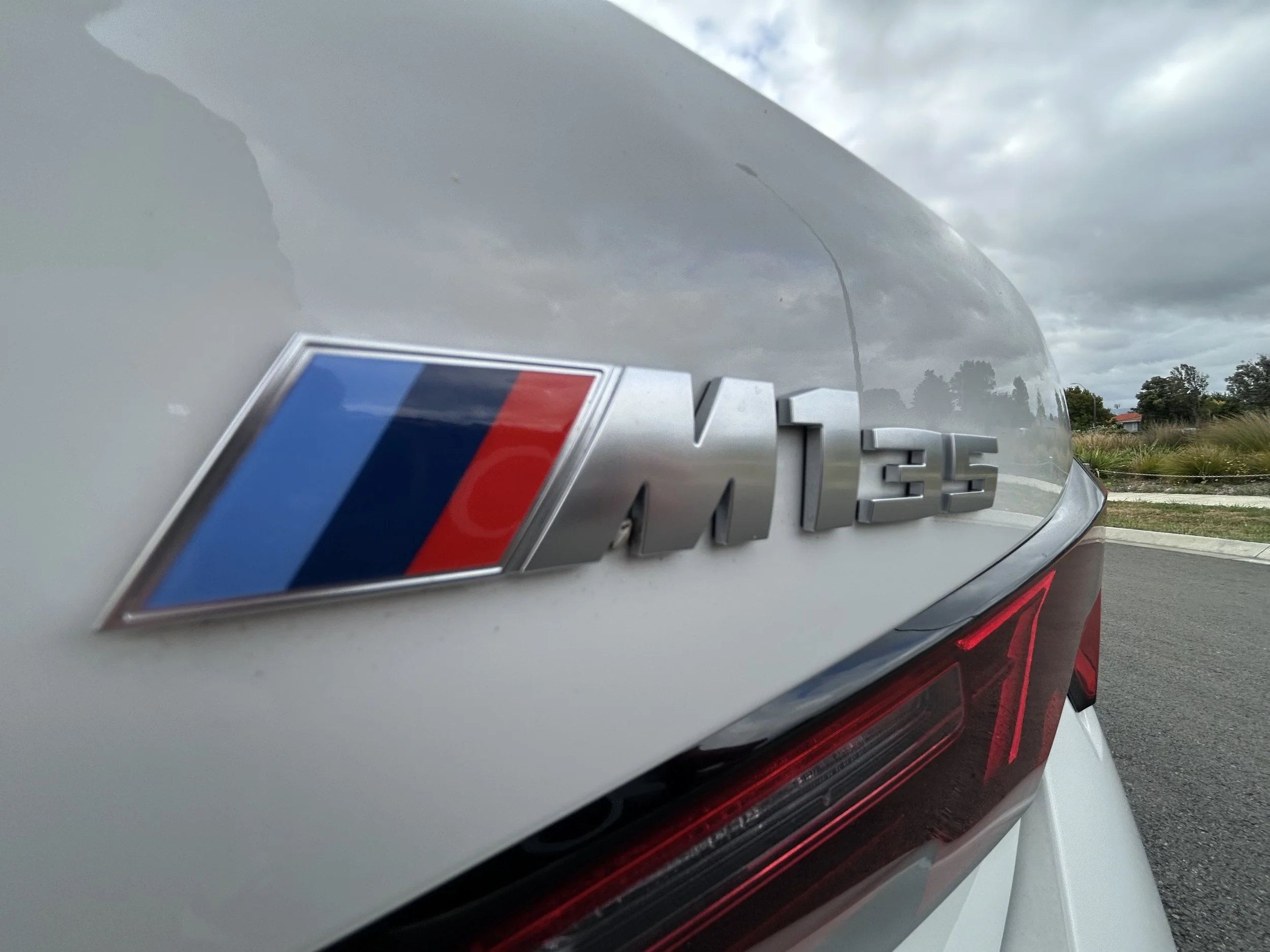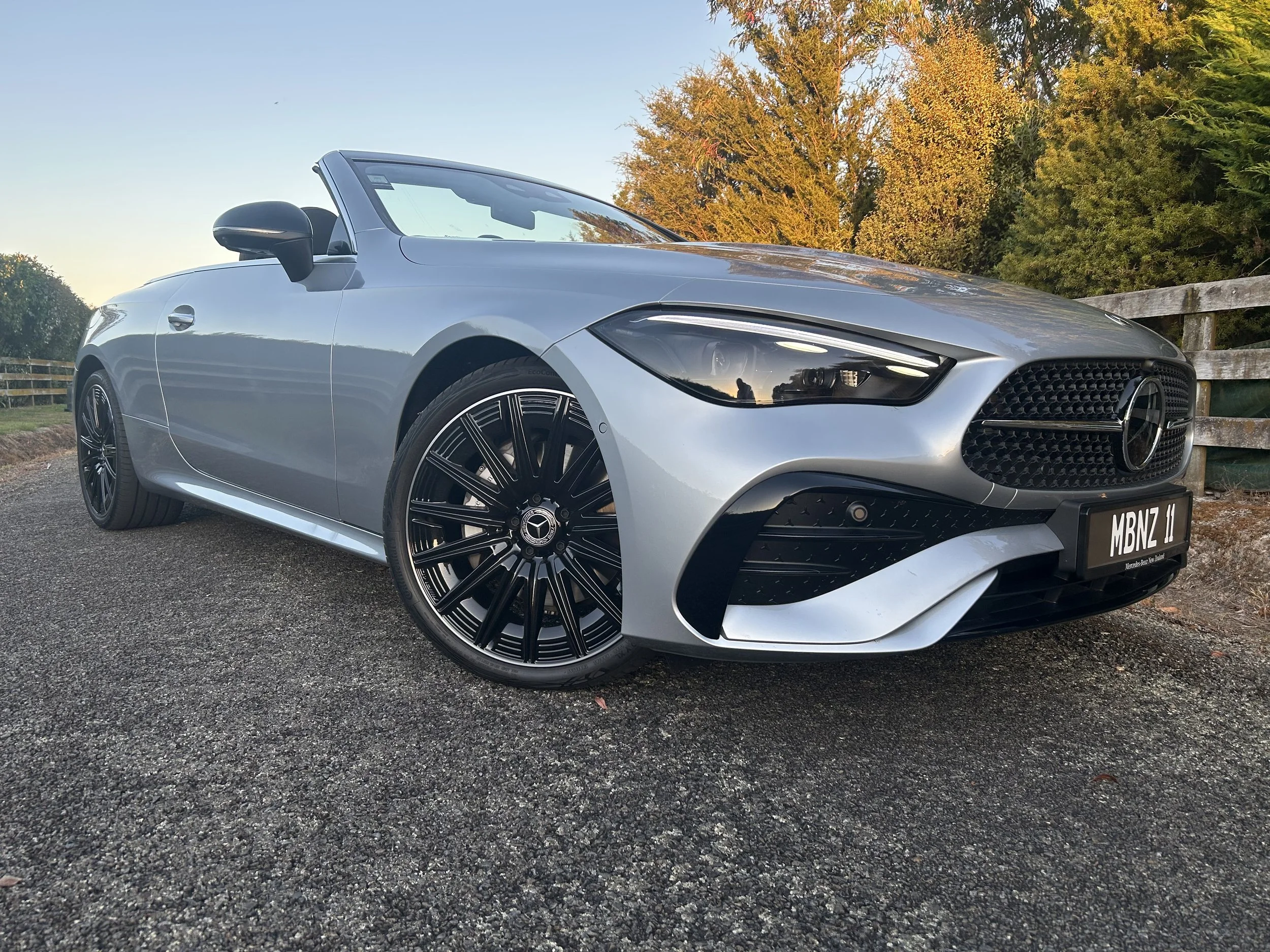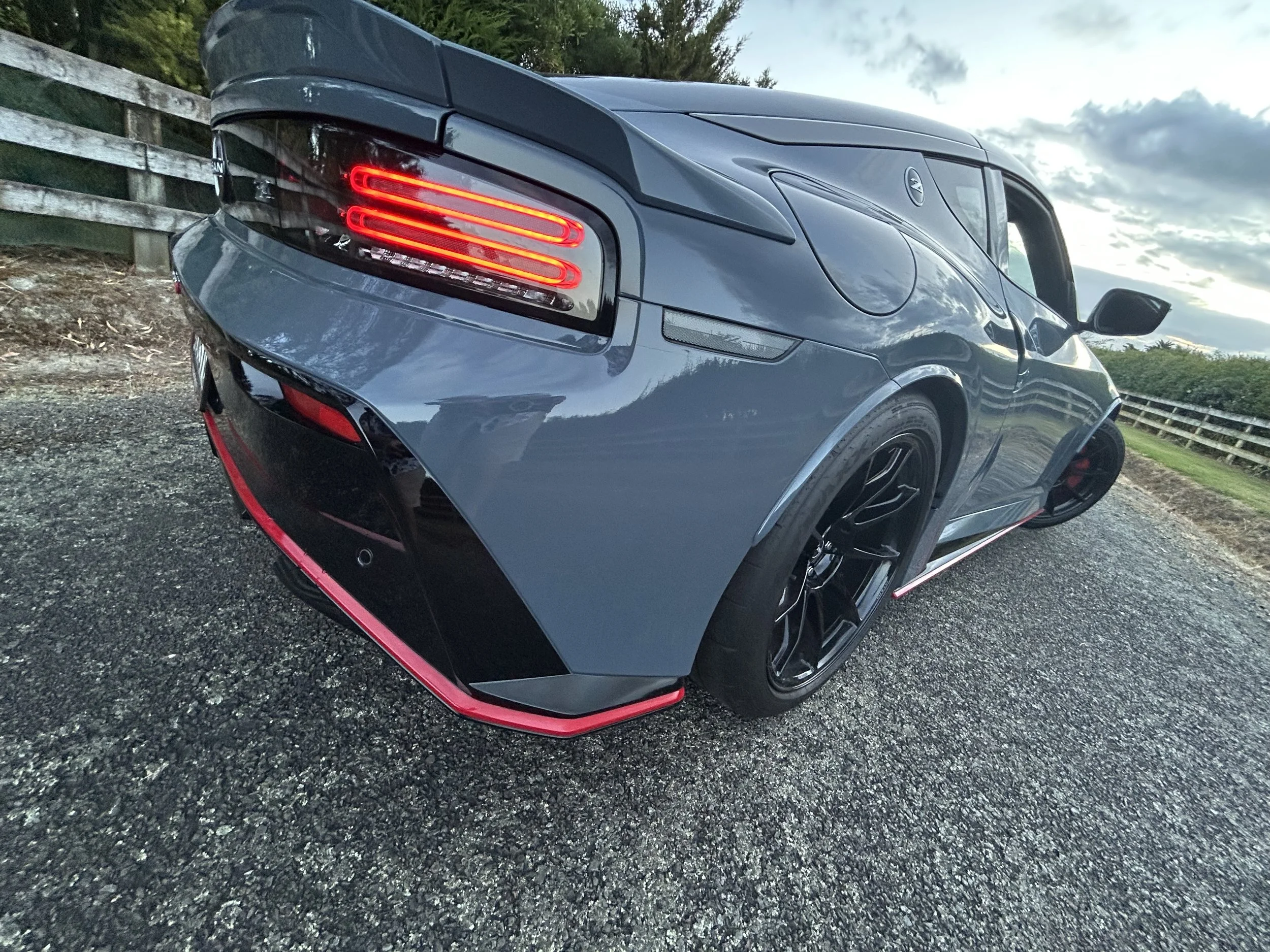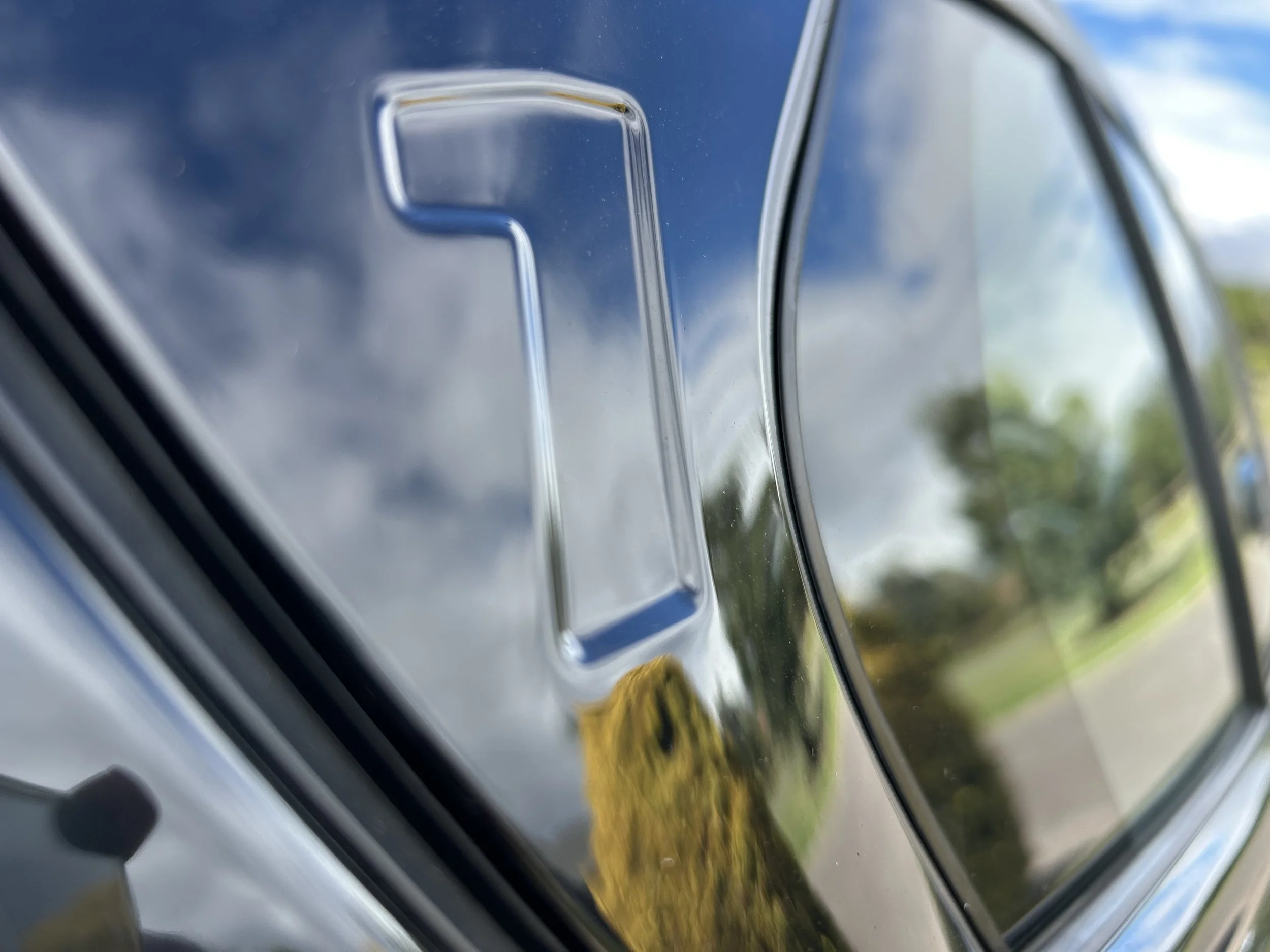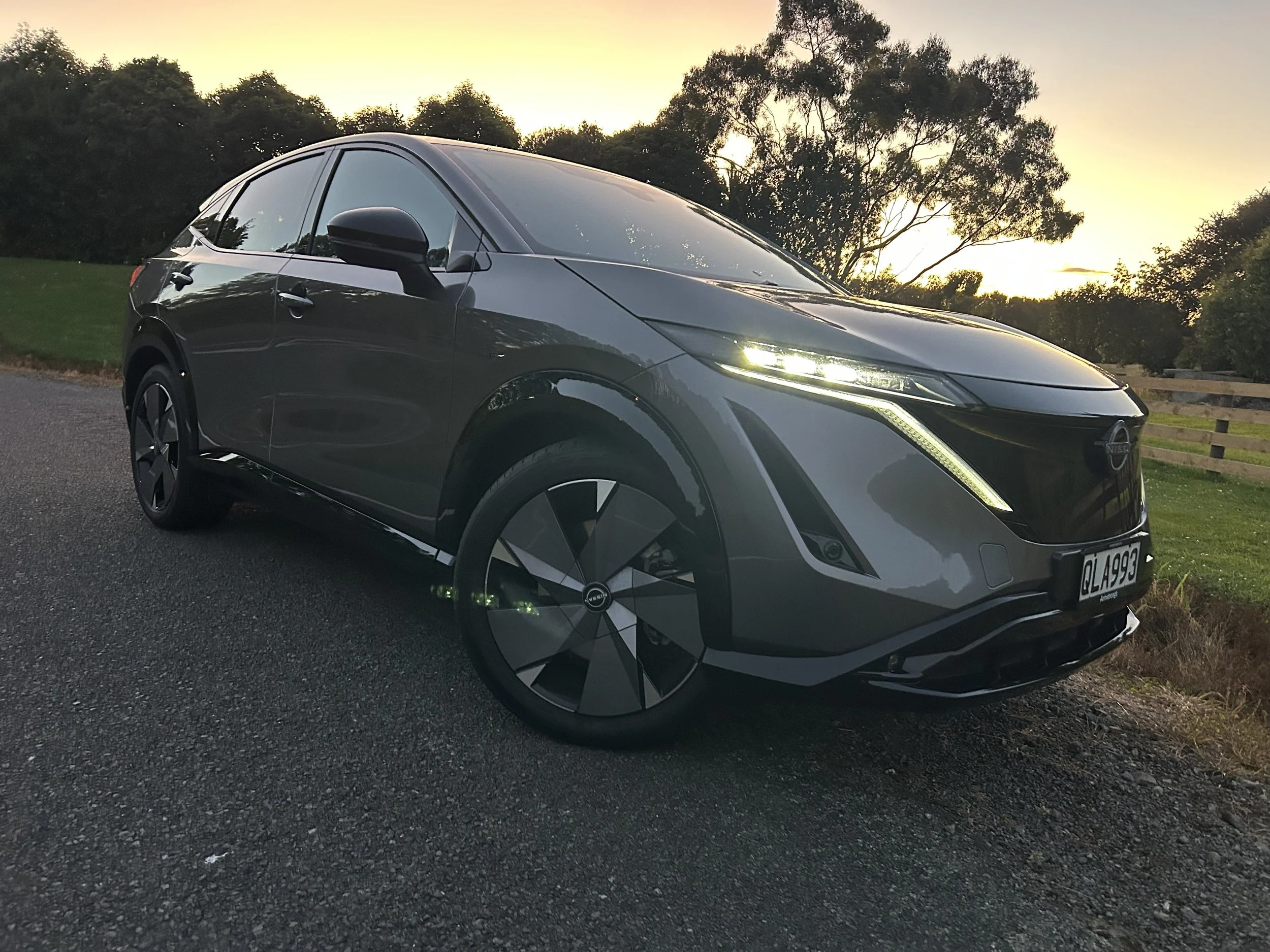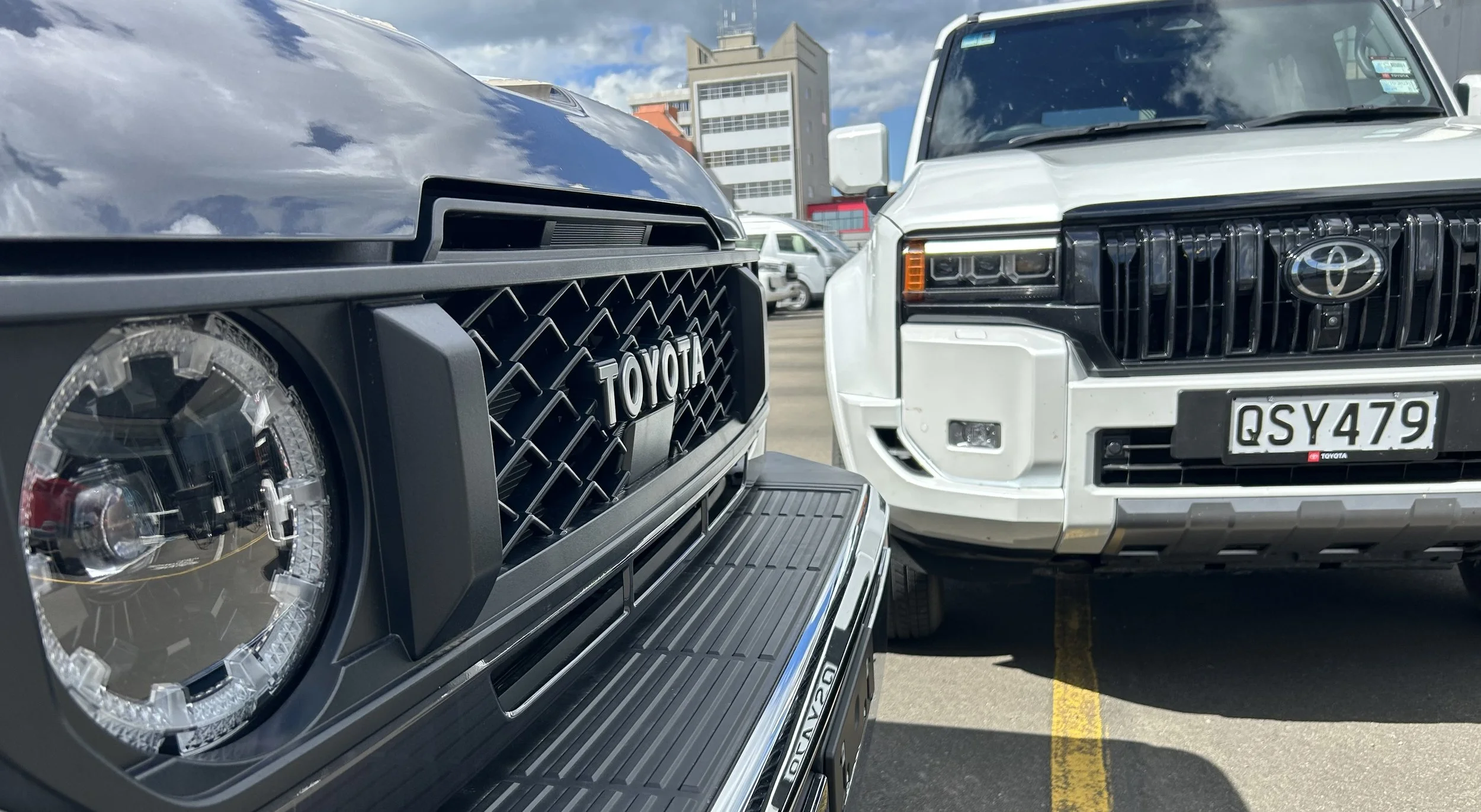Volkswagen Golf R road test review: Pro circuit king
/Even more energised, just as engaging - you can have a lot of fun in the ultimate Golf, but if going this big, go all the way.
Price as tested: $82,990.
Powertrain: 1984cc four-cylinder turbocharged petrol, 245kW, 420Nm, seven-speed direct shift, 4Motion all-wheel-drive.
How big: 4290mm long; 1789mm wide; 1458mm tall.
We like: Astonishingly broad bandwidth of performance; subtle styling enhancements; so well-suited to NZ secondary roads; a classic.
Not so much: No access to that brilliant exhaust; Black Pack brings best tweaks; demands 98 octane or better.
TROPHIES don’t account for much shelf space in my den but there’s one gathering dust there that counts for little yet means a lot.
It’s something picked up at the launch of the car now on test in facelift form.
When this generation of Golf R released in May of 2022, Pukekone circuit was still open - but only just - and VW New Zealand based the media day there, for fast laps and a slalom handling trial.
So, anyway, now I have a smart-looking cut crystal glass thing engraved ‘R-rated #1 journo speed demon.’ No big thing. But the looks of envy on colleagues’ faces …
So, clearly I’m a man of great at-the-wheel talent. Except … well, maybe it wasn’t just me. Credit also had to go to the car on that day.
Two years on, the recipe that seemed so very right has been further refined. To by and large become even better. Who knew that was possible?
Sure, the basic formula remains unchanged, pairing a 2.0-litre turbocharged four-cylinder petrol engine with a dual-clutch automatic gearbox and all-wheel-drive transmission. But the Golf in general has been updated, and, because of that, so has the ultimate rascal.
You knew it was coming. Volkswagen has a rich history of producing hot hatches and the heritage of 50 years of Golf lineage does them proud. The base car in its own right is a polished and all-round talented product that deservedly wins many fans; the street racer evolutions are all the more so. But where’s it all heading from here?
VW’s high-performance future is going to one day have to be either fully electric or at least partly electrified (in the mid-term). I’m not too worried about that. On the other hand, it’s also brilliant we’ve still got the Golf hot hatches.
Frankly, if opportunity allowed dream garage realisation, I’d probably have both the R and a GTI. The latter is a legend and always will be. But this generation of R has also come of age as well. The pre-facelift was one of the best cars I drove in 2022. The model as it now is will likely have the same status within the class of 2024.
Why go to the R when the GTI is in itself such a star? There’s always been a lot of ‘for’ and ‘against’ about four-wheel-drive, not least because the alternate is such an agile dancer. Does it therefore need the extra weight and complexity? It hasn’t always in the past.
But now … it’s different. All-paw pays a tasty dividend. The car can put down all its extra power onto the tarmac, grip even harder through the corners and inspire more confidence in its driver and the trusty old ‘EA888’ 2.0-litre turbocharged four-cylinder petrol engine making even more grunt in this format is no problem.
An R out of the box is terrific. Could it be better still? Now, as when it first came out, the model came with an enhancement package that still seems tasty. The same money buying the car on test today bought a First Edition back then to which could be added a Performance Pack, whose equivalent today appears to be the Black Pack, yours for an additional $4500.
They’re not quite the same thing, and even if ignored, the R now has more sting than it did then. Update time has brought 10kW more power, 20 Nm more torque, so the response from the engine bay is the same as the special edition pre-facelift Golf R 20 Years model. Zero to 100kmh takes just 4.6 seconds.
It’s still a very exciting, very well sorted crackpot kind of hot hatch. It still feels seriously quick and handles very well, even in the sort of adverse weather conditions we’re used to at this time of the year. You’d call it playful and be glad for every opportunity.
The R’s neat attraction is the dual-clutch set-up on the trailing axle that can do proper torque vectoring across the back wheels. For example, all the power can go to the outside wheels in tight corners to mitigate understeer, which is when a car wanders wide through corners at speed.
The benefits of that accentuated with Performance Pack and continues to do so with Black. As always, there are five driving modes to choose from in the Golf R - Comfort, Eco, Sport, Race and Individual - but as before the additional spend buys two ‘racetrack-specific’ driving modes called Drift and Special, with a GPS lap timer and a G-meter display on the infotainment rounding out the changes.
Get this and you will understand that ‘Race’ is just Sport mode by another name. The additional are really all a bit too bogan for the road - not even when the surface is firm and dry - but make the R even more wonderfully useful on the track. Drift was a handy element to engage tight skidding around the cones during my prize-winning run. The car also lifted an inside wheel when pushed, which added to the fun.
All in all, the Performance Pack car felt tangibly more reactive and definitely sounded more exciting than the standard model and I daresay it should be the same for the Black now. So I’d say you could bet on it being a more rewarding spend than the alternate Touring treatment, which for $3500 purely enhances the stereo and adds a sunroof. Neither of those adjusts will obviously improve performance times or perceived hero status, so seem wasted money to me.
The only absent ingredient now appears to be the factory-sanctioned Akrapovic exhaust. It no longer seems an option, and that’s a real shame. The pops and burbles it delivered really were something else. With factory pipes, the engine only starts to truly sound out in the Race’ mode, which isn’t recommended for the road, and even then it’s just not as exciting or half as operatic.
Still, even if it goes about its business with less aural flair, there’s no doubt the R is still a finely honed weapon of a thing. Give it a burl and the interactivity is sublime. The steering, the brakes, the body control, the throttle response and the speed of the DSG’s shifts on those enlarged paddles. All are just wonderful. The car is addictive.
In respect to the R only being available with automatic? Not a problem. As much as I enjoyed the previous kinds when they presented in full manual, the latest seven-speed DSG can be set to be so totally hands-on that it’s arguably better than a trad manual. It definitely doesn’t diminish the driving experience, not least when you’ve bashing along a busy road and prefer to keep both mitts on the wheel. You can do this with DSG and flicking up and down the gears rather suits the car’s character.
All modes give a relatively hard ride, but Sport and Race are, of course, more unforgiving than Comfort; the most extreme is very hardcore.
Speaking of. What’s appealing is that as much as the R clearly identifies as the family rascal, it avoids looking absolutely loutish. Golf’s mid-life facelift has brought extra revisions to the hot models.
As facelifts go, it is hardly noticeable at all. Which, as any Hollywood A-lister will tell you, is often kind of the whole point. The ‘IQ. Light’ LED Matrix headlamps are sleeker and it can take an illuminated nose badge, which seems a bit twee, but overall …. yeah, the same Golf as before.
Assuredly the R is as mean as ever with a big, gaping airdam in the front bumper, 19-inch ‘Estoril’ alloy wheels, side skirts, the discreet ‘R’ boot badge, the twin-slatted and large roof spoiler, and a set of quad exhaust pipes peeking out of the rear diffuser. The pipe count and its layout, incidentally, is why this version isn’t signed off for taking a tow kit.
Within the cabin the R broadly gets the same sporty treatment as the GTI, though with obvious detailing changes. The seats and steering wheel are the same, but with blue trim for the R and red for the GTI. The R has bigger gearshift paddles and achieves a carbon-effect trim. Plus, GTI has a tartan cloth seat trim; the R can too in some markets, but here they’ve ticked the box leather.
Golf might be mainstream, but it lacks the feel of a car built down to a price. Everything about this one reeked of quality; the doors closed with a solid thunk and the Lapiz Blue metallic - the hero hue of all VW performance models, true, but one that works so well here - paintwork was flawless.
The infotainment setup with the standard Golf in original form was a bit of a turn-off; too many submenus, tardy response and some key functions were hard to use at night because buttons didn’t illuminate.
The new 12.9-inch system is inherently similar in look, but has a larger display and is powered by the MIB4 operating system, so it’s noticeably quicker and more sensible to navigate. The car’s ability to pair two different mobile devices at the same time perhaps speaks to its brain being bigger.
Anyway, it’s better than before and so are the now backlit slider controls. So, issues sorted, I’d say.Well, for this interface.
Unfortunately, while the rest of the Golf range has stepped back to old-fashioned physical buttons on the steering wheel, the R keeps keeps the touch-sensitive buttons some also found annoying.
They’re not such a deal-breaker for me, though I would agree it is easy to inadvertently brush them and change settings. There are various theories about why the wheel wasn’t re-engineered; logically it’s likely all because of that illuminated ‘R’ button that acts as a fast track to mode-changing on the move. This is bespoke to the car and likely the cost of integrating it into a new wheel was much greater than the value of any benefit to such a low-volume model.
Volkswagen has begun rolling out ChatGPT functionality in its cars so it has IDA voice assistant tech which can answer any questions the occupants want to fire at it. Or at least it’ll attempt to answer them. We never seemed to have much to talk about.
There are numerous built-in safety systems as standard, the ‘Travel Assist’ function has lane keeping to help prevent the car from drifting out of its lane, there’s automatic emergency braking to mitigate against low-speed impacts - it’s a bit overly -protective but worth having - and an advanced pedestrian detection system to protect vulnerable road users. Adaptive cruise control and a dynamic road sign display feature that detects the current speed limit are useful because, unlike some, they aren’t overly strident in any interactions.
One of the appealing aspects of the Golf R since the model’s inception is that the regular Golf’s practicality isn’t compromised by the additional performance and ability.
It’ll seat four adults comfortably and would accomodate five at a push, if just for shorter distances as the middle pew isn’t as comfortable as the outer rear seats. Both rear outer seats feature ISOFIX anchor points, as does the front passenger seat. The latter has an airbag deactivation function for installing a child seat.
There are two cup holders up front - my wife’s travel mug is often a bit too small or a touch too big, but VW’s are smart adjustable types, so a big thumbs’ up from her - and two in the back, though given the firmness of the ride you’d be brave to cope with a hot beverage on the run back there.
The boot is smaller here, down to 341 litres, due to the addition of the upgraded rear differential, it is still sensibly-sized and easily able to accommodate all the usual stuff Golfs carry. Including, doubtless, sets of golf clubs.
Also attractive if you’re able to keep the reins tight is the engine’s ability to be reasonably economical. Volkswagen quotes 8.2 litres/100km and I’d say that certainly isn’t totally out of the question, even though the car did return after a week’s use with an - ahem - somewhat higher average consumption rate. All I can say is that I am fortunate to live in an area where good roads abound. plus, when this car was on test, I always seemed to have some reason for going out in it.
It would be remiss not to mention that there are other cars with this hardware. You might choose to also drive the Audi S3 and the Cupra Formentor to see if they work out better for your lifestyle.
The Audi has exactly the same outputs, but costs a smidge under $104k; it’s perceived to be a more upmarket car, but ingredients-wise is pretty much on par with what the parent provides.
Cupra’s car has the engine in 228kW tune, but with a more exciting soundtrack than VW’s, and it’s a really different setting; a more charismatic styling, perhaps, but one that is not really any more practical.
The Golf R isn’t a cheap choice, but it nonetheless sites between both those sister models on price and will have the least trouble assessing its credibility as an enthusiast choice with those who understand value is about more than just dollars and cents.
It remains, as always, a car that could be easily underestimated - because it’s practical, it's comfortable and is quiet when you want it to be - but never should be.
As eager, as engaging, as fun as the GTI? It might be to some, might not be to others. But in isolation the R is a staggeringly rapid car with all-weather ability and a perfect mix of performance and usability. There’s enough talent here that anyone who doesn’t try it out on a track is doing it a disservice. Again, as before.
Just as it should be.

